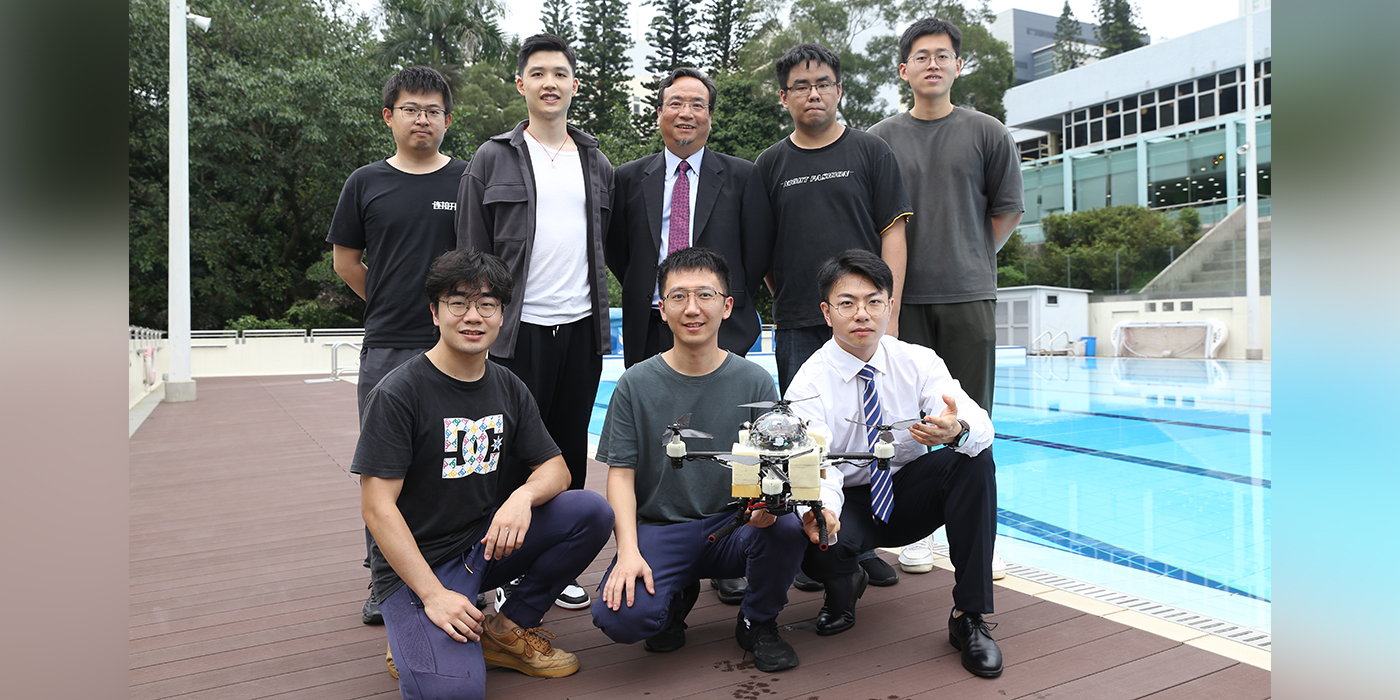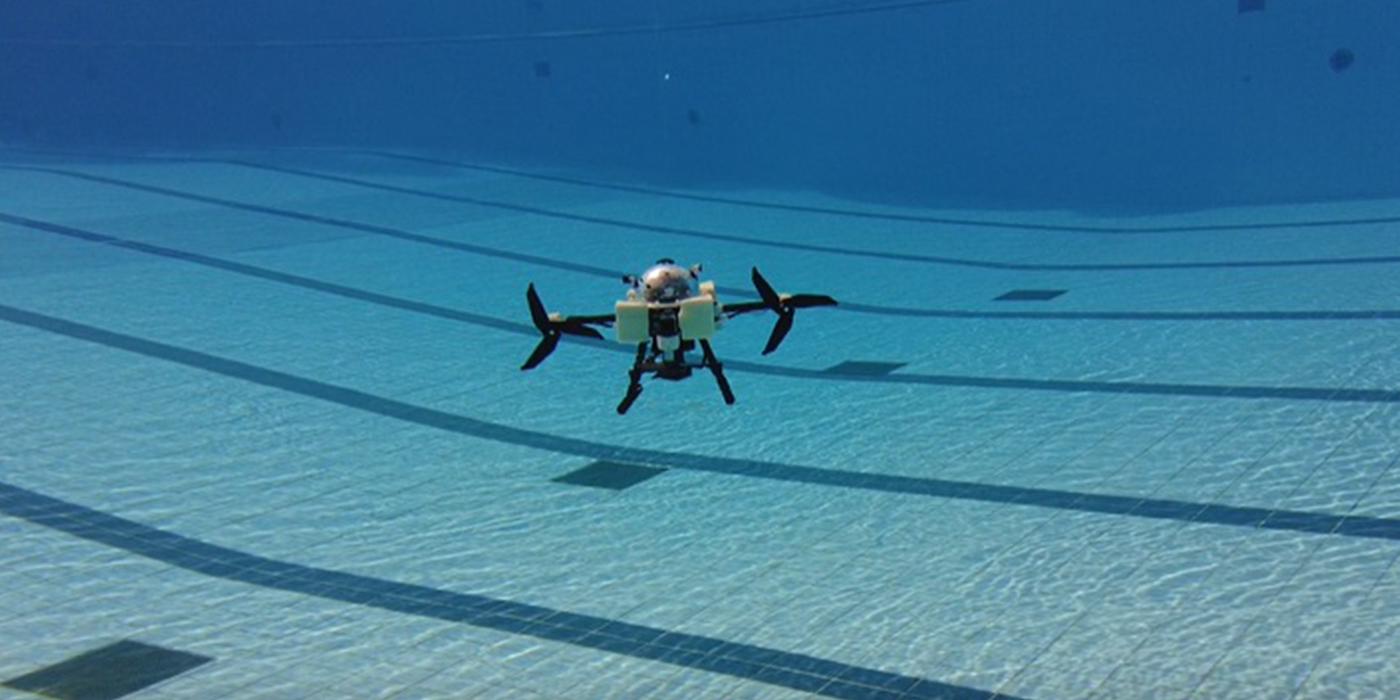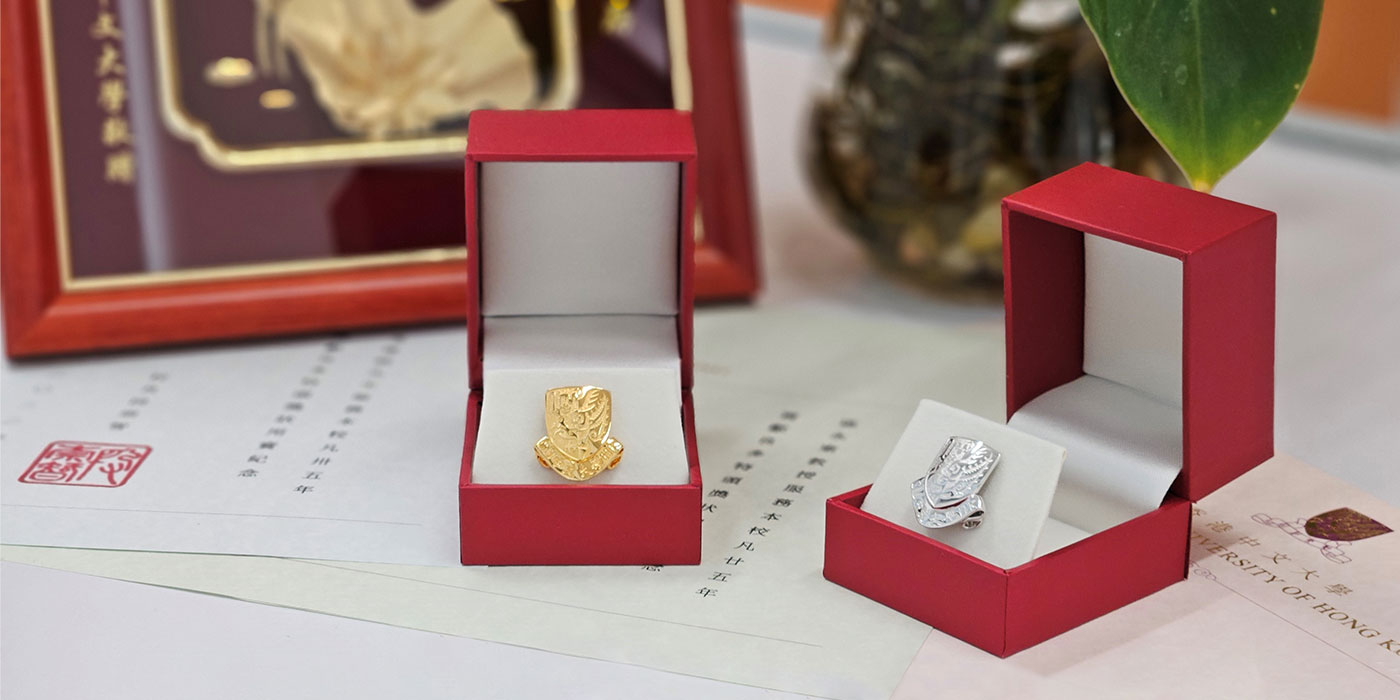The first aerial-aquatic hybrid drone
A research team jointly led by Professor Ben M. Chen from CUHK’s Department of Mechanical and Automation Engineering and Professor Jie Chen from Tongji University’s Shanghai Research Institute for Intelligent Autonomous Systems has successfully invented the TJ-FlyingFish, an unprecedented amphibious drone capable of exploring underwater environments. The drone can be used for aerial and aquatic surveys, remote sensing and search-and-rescue operations, among other applications.

The TJ-FlyingFish is completely autonomous, requiring no human intervention during its journey. It is equipped with a cross-domain positioning and navigation system, consisting of GPS, an inertial measurement unit, a depth meter and a mini doppler velocity log, which enables autonomous control during its entire amphibious journey.
The design of the TJ-FlyingFish boasts unique elements, with four arms that each have a propulsion unit at the end. These units incorporate a special dual-speed gearbox and can rotate independently to allow optimal air or water movement.
This amphibious drone weighs 1.63 kilograms. It can hover for six minutes in the air or dive underwater for about 40 minutes per battery charge. It can dive to a maximum depth of three metres and move up to two metres per second in water.




















